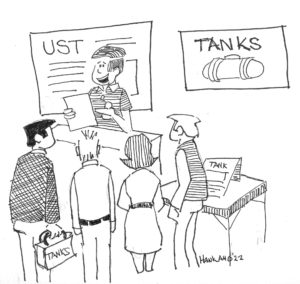Strategies for Cost Control (NTC 2022 Preview)
Managing LUST Cleanup Funds
Managers of state LUST cleanup funds have a charge to both remediate sites and ensure that monies are spent prudently to maximize the cleanups completed. Controlling costs and ensuring that reimbursement rates are both fair and reasonable is challenging. Factor in today’s current inflation, and knowing what is fair and reasonable becomes even more of a challenge.
The “Strategies for Cost Control” session at the 2022 National Tanks Conference will begin with a review of a recent cleanup-costs analysis in Kansas, South Carolina, and Virginia. The analysis, conducted by the EPA Office of Underground Storage Tanks and Office of Communications, Partnerships, and Analysis, yielded some interesting insights into the costs of cleanup: what drives the costs of cleanup, what proportions of the costs are devoted to each phase of the cleanup, and how long cleanups take. Tom Schruben, EPA OUST, will provide an overview of those findings.
The session will then feature two presentations from Indiana and Utah about their recent cost-control efforts. Douglas Louks, Indiana Department of Environmental Management, will discuss Indiana’s new electronic claim submittal process, which facilitates task-based cost controls for the state’s Excess Liability Trust Fund (ELTF). This new process allows for the capture, query, and analysis of all costs related to tasks across all sites and consultants. It has provided the state with meaningful, fungible data for the first time in the 30 years of the ELTF. Loucks will also provide background on the 2016 actuarial and managerial audit of the ELTF that led to these improvements.
Molly Parker, Utah Department of Environmental Quality, will describe the development of the state’s “Cost Guidelines for Utah Underground Storage Tank Sites,” which establishes the framework for a standardized and consistent approach for work done by state contractors and for state fund reimbursements. These guidelines are the result of an extensive data-driven review of the entire state fund reimbursement process that began in 2018. This presentation will review the findings of the process review, including some examples of how Utah’s former processes were being exploited. It will then discuss the changes implemented by the cost guidelines document.
The session will also include an interactive dialogue around what states are doing on various related issues, such as labor rates, consultant markups, and accounting for inflation.

